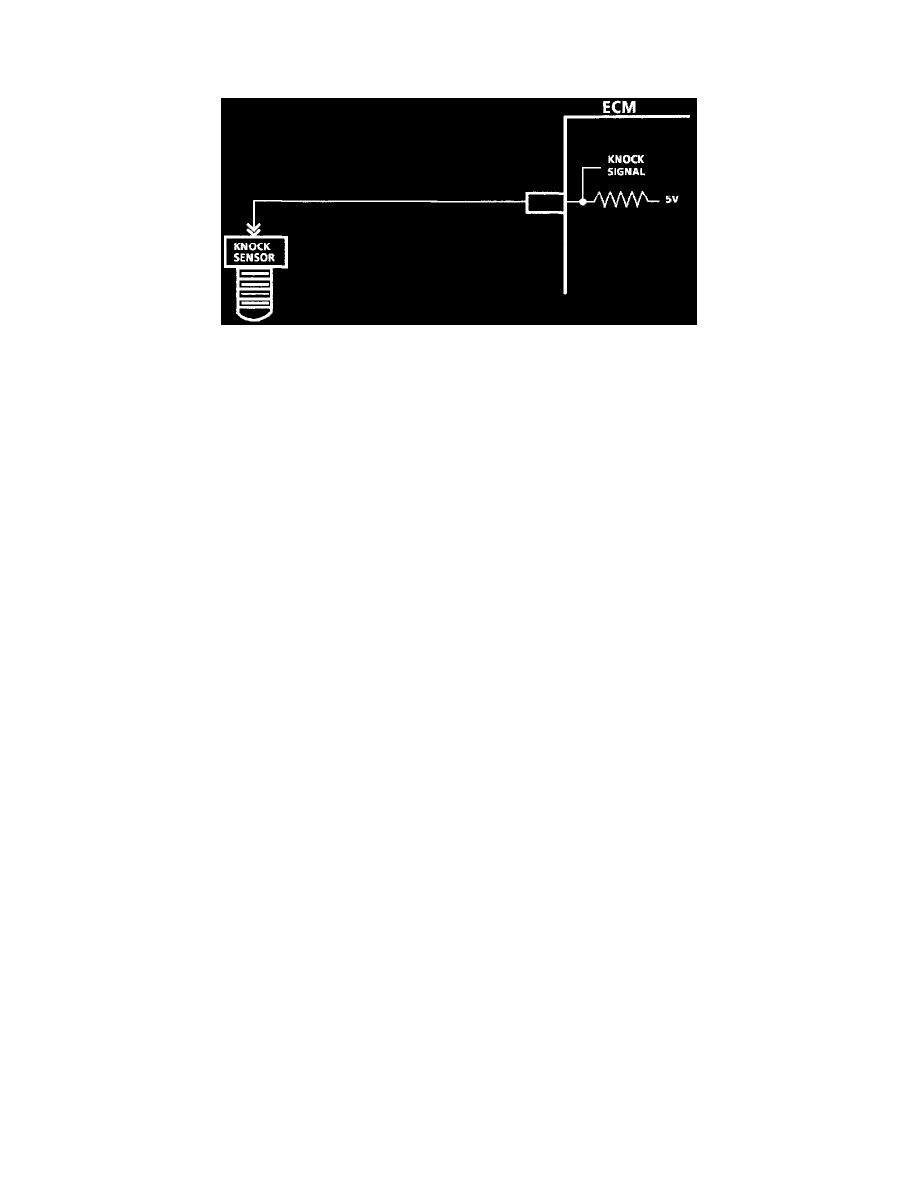Lumina V6-191 3.1L VIN T MFI (1993)

Knock Sensor: Description and Operation
California Emissions (GEN-II S)
Knock Sensor Wiring (Typical)
PURPOSE
To reduce spark knock (detonation) by retarding timing advance.
OPERATION
The Knock Sensor (KS) system is one of the inputs to the Electronic Control Module (ECM) and is used to determine control of the Ignition
Control (IC) circuit. The KS system is comprised of a knock sensor and KS module (part of PROM). When the knock sensor detects detonation,
the ECM retards timing in small increments (up to 10°) to reduce detonation. This allows the engine to use maximum spark advance to improve
driveability and fuel economy. Retarded timing can also be a result of excessive valve lifter, pushrod or other mechanical engine or transmission
noise.
CIRCUIT DESCRIPTION
The knock sensor is used to detect engine detonation and the ECM will retard the electronic spark timing based on the signal being received, The
circuitry within the knock sensor causes the ECM's supplied 5 volt signal to be pulled down so that under a no knock condition, CKT 496 would
measure about 2.5 volts.
The knock sensor produces an Alternating Current (AC) signal which rides on the 2.5 volts DC voltage. The amplitude and frequency are
dependent upon the intensity of the knock.
The PROM used with this vehicle contains the functions which were part of the remotely mounted KS modules used on other GM vehicles. The
KS portion of the PROM then sends a signal to other parts of the ECM which adjusts the spark timing to reduce detonation.
LOCATION
The KS module is located inside the ECM.
